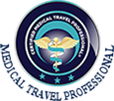
The DBS method to cure essential tremor
Deep brain stimulation (DBS) of the ventral intermediate nucleus of the thalamus (VIM) has proven to be efficacious in the treatment of essential tremor. When medications aren’t effective, or their side effects are intolerable, and your symptoms make everyday life a challenge, DBS may help.
WHAT IS DBS?
Deep brain stimulation (DBS) uses a small, pacemaker-like device, placed under the skin of the chest, to send electronic signals to an area in the brain that controls movement. The surgery is conducted under a local anaesthetic. The use of a rigid metal frame, which holds the patients head perfectly still, helps ensure precise guidance of the instruments during surgery. Clinical studies have shown that Medtronic DBS Therapy for essential tremor provides improved ability to do everyday activities, less tremor, and less disability.
What are the benefits of the DBS method?
- DBS can effectively suppress essential tremor for more than six years after implantation.
- Reduces tremor in one upper extremity, which typically includes one arm and hand.
- DBS delivers therapy 24 hours a day — it doesn’t wear off while you sleep.
- DBS is reversible. The system can be turned off or removed, and won’t limit your future treatment options.
Rambam hospital employs a surgical team includes the staff of the Center for Motor Function Disorders and Parkinson's Disease under the guidance of Dr. Ilana Schlesinger.
Composition of the team:

Dr. Ilana Schlesinger, MD >>
- Neurophysiologist Dr. Alon Sinai-expert in the recording of electrical brain signals. He is responsible for the electroencephalogram during the operation.
- Professor Judith Aaron-Peretz-specialist in the field of cognitive and psychological neurology.
This multidisciplinary team also includes physiotherapists and social workers. The team’s work with each patient is coordinated by Nurse Ilana Arik, who passed special academic training for this purpose.
The team accompanies the patient throughout the entire process, including diagnosis and decision-making about surgery, developing an operation plan and the operation itself, programming the neurostimulator, and subsequently monitoring the patient.
Which patients are suitable for the procedure?
"The success of the operation depends largely on how well it suits the individual patient," explain Professor Zaarur and Dr. Schlesinger.
"The most optimal fit are patients with severe Parkinson's Disease, who for several years took L-Dopa and developed severe side effects of drug therapy, such as dyskinesia or alternating periods of normal motion and immobility."
In addition, the implantation of a Deep Brain Stimulation electrode is suitable for patients with a tremendous tremor, as well as patients with dystonia suffering from uncontrolled tics. Implantation of the Deep Brain Stimulation electrode is not suitable for patients suffering from cognitive decline or patients with pseudoparkinsonian syndromes, as well as patients with balance issues and dizziness who are at risk of falling.
Professor Zaarur points out that modern scientific literature describes the eventual possibility of implanting a neurostimulator to alleviate the symptoms of endogenous depression, chronic pain, Tourette’s Syndrome (involuntary motor and voice tics), and even lack of consciousness due to head trauma.
Use the form below to check if you are suitable for the DBS treatment.








